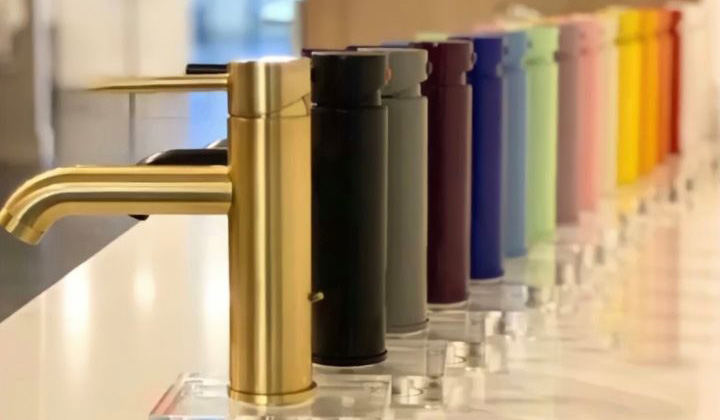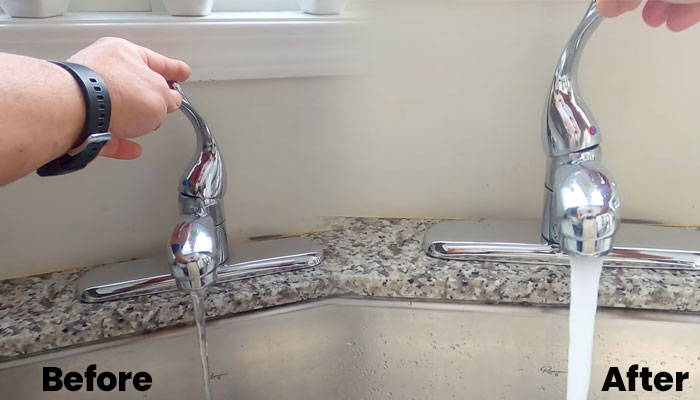How To Reseal Kitchen Sink
Resealing your kitchen sink might seem like a straightforward task, but knowing when and how to do it properly can save you from costly water damage and leaks. Whether you’ve noticed a drip or your sealant is just looking worn out, mastering the resealing process is a smart way to keep your sink airtight and your kitchen dry. This guide will walk you through everything you need to know, from spotting the signs that your sink needs resealing to step-by-step instructions and expert tips, so you can tackle this project with confidence.
Signs Your Kitchen Sink Needs Resealing
Knowing when to reseal your kitchen sink is crucial to prevent leaks and water damage. Here are some clear signs to watch for:
- Visible gaps or cracks: If you can see cracks or gaps in the sealant around your sink, it’s a sign that water might be seeping underneath.
- Water pooling around the sink base: Standing water or dampness on your countertop near the sink suggests the seal isn’t holding up.
- Mold or mildew growth: A persistent musty smell or black spots along the sink edges often indicate moisture trapped due to seal failure.
- Loose or shifting sink: If your sink feels wobbly or shifts when you push on it, the seal might be compromised.
If any of these signs sound familiar, it’s time to consider resealing to protect your kitchen from further damage.
Essential Tools And Materials For Resealing
Before you jump into resealing, gather the right tools and materials to set yourself up for success. Here’s a checklist:
- Sealant: Use a high-quality silicone caulk designed for kitchens. Look for waterproof, mold-resistant varieties.
- Caulking gun: Needed if your sealant comes in a tube.
- Utility knife or scraper: To carefully remove old sealant without damaging your sink or countertop.
- Rubbing alcohol or mild cleaner: For cleaning surfaces before applying new sealant.
- Paper towels or clean cloths: To wipe areas clean and dry.
- Masking tape: Helps create straight, clean lines when applying sealant.
- Gloves: Protect your hands from chemicals and mess.
- Bucket or sponge: In case of drips or spills.
Having these items on hand will help you reseal your kitchen sink efficiently and neatly.
Step-By-Step Guide To Resealing Your Kitchen Sink
Preparing The Area For Resealing
Start by clearing everything around your sink. Remove dishes, soap dispensers, and any clutter. Make sure the area is dry and well-lit for optimal work conditions.
Removing The Old Sealant
Use your utility knife or scraper to gently cut away and peel off the old sealant. Take your time here, rushing can scratch your countertop or sink. Removing as much of the old sealant as possible is key to a good new seal.
Cleaning And Drying The Surface
Once the old sealant is removed, clean the seams thoroughly. Use rubbing alcohol or a mild cleaner to wipe away residue, dirt, and grease. Allow the area to dry completely before moving on: moisture here can prevent proper adhesion.
Applying New Sealant Properly
Apply masking tape on either side of the seam for a crisp, straight seal line. Load your caulking gun with the silicone sealant and apply a continuous bead along the edge where the sink meets the countertop. Hold the gun at a consistent angle and pressure to avoid gaps or excess.
Next, wet your finger or a smoothing tool and gently smooth out the bead to create a clean finish. Remove the masking tape carefully before the sealant begins to skin over.
Curing And Finishing Touches
Allow the sealant to cure based on manufacturer instructions, usually 24 hours. Avoid using the sink during this time to ensure a durable, water-tight seal. After curing, inspect your work: any small gaps can be filled in, but a smooth, uniform seal should prevent future leaks.
Common Mistakes To Avoid When Resealing
Knowing what pitfalls to avoid ensures your resealing job lasts longer:
- Not removing all old sealant: Leaving old material behind causes poor adhesion and gaps.
- Applying sealant on a wet surface: Moisture can prevent sealant from sticking properly.
- Skipping masking tape: This often leads to messy, uneven lines.
- Using the wrong sealant: Avoid plumber’s putty or non-silicone caulk, which aren’t waterproof or flexible enough.
- Rushing curing time: Premature use of the sink can ruin the fresh seal.
- Applying too much sealant: Excess silicone can look untidy and take longer to dry.
Avoid these common mistakes, and you’ll thank yourself down the line with a leak-free kitchen.
Tips For Maintaining Your Kitchen Sink Seal
Keeping your sink seal in good condition extends its life and prevents future leaks:
- Clean regularly: Wipe down the seams to avoid mold and grime buildup.
- Check for cracks frequently: Early detection can stop leaks before they start.
- Keep heavy objects off the sink edges: Excess pressure can weaken the seal.
- Avoid harsh chemicals: Use gentle cleaners around the seal to prevent degradation.
- Touch up small gaps early: A quick dab of silicone can save a big headache later.
Routine maintenance is easier and cheaper than full resealing DIY projects or professional repairs.
When To Call A Professional For Help
While resealing a kitchen sink is doable for most DIYers, you should reach out to a professional if:
- You notice persistent leaks even though resealing: It may signal plumbing issues beyond the seal.
- Your sink or countertop is damaged: Cracks in materials can complicate resealing.
- You’re unsure about proper sealant choice or technique: Professionals can ensure a perfect, lasting job.
- You lack time or tools: Sometimes hiring out avoids costly mistakes.
A skilled plumber or handyman can assess the situation and offer long-term solutions that keep your kitchen safe and dry.
Conclusion
Resealing your kitchen sink is a practical skill that protects your investment and keeps your kitchen functioning smoothly. By recognizing the signs, preparing correctly, and applying sealant with care, you can confidentally handle this task yourself. Remember to maintain your seal regularly and know when professional help is the wiser choice. With these steps, your kitchen sink will stay leak-free and looking great for years to come.


